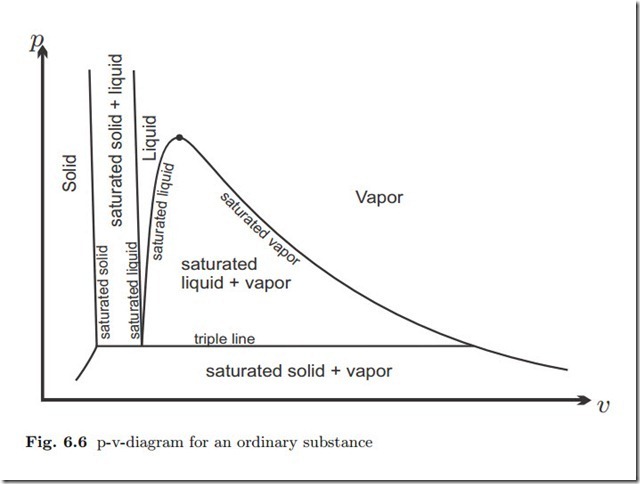Pressure over #1000ml# of a liquid is gradually increased from #1# bar to #1001# bar under adiabatic conditions. If the final volume of the liquid is #990ml#, calculate #DeltaU# and #DeltaH# of the process?
Assuming a linear variation of volume with pressure.
Assuming a linear variation of volume with pressure.
1 Answer
I got about
#DeltaU ~~ "501 J"#
#DeltaH ~~ "99.5 kJ"#
It should be this big, seeing as how liquids are quite incompressible. Since the liquid was compressed, the work done is positive and
Well, since there was pressure-volume work done under adiabatic conditions, we know that
#dU = cancel(deltaq) + deltaw#
Assuming this variation of volume with pressure is linear, we simply take the area under the curve of a
We are really traveling up the liquid curve here (right next to the dot), which is very steep:

The area of the right triangle is a significant portion of the amount of work done.
First, we note that its height is
Therefore,
#|w_"tri"| ~~ 1/2"0.01 L" cdot "1000 bar" = "5 L"cdot"bar"#
And converting the units,
#"5 L"cdot"bar" xx ("8.314472 J")/("0.083145 L"cdot"bar") = "499.998 J"#
The area of the rectangle is relative to
#|w_"rect"| = "0.01 L" cdot "1 bar" = "0.01 L"cdot"bar" = "0.999997 J"#
So the total work is about:
#color(blue)(DeltaU_"adia") = w ~~ "499.998 J" + "0.999997 J"#
#~~# #"500.998 J"# #-># #color(blue)ul"501 J"#
For a liquid, since the pressure changed by so much,
#color(blue)(DeltaH_"adia") = DeltaU_"adia" + Delta(PV)#
#= DeltaU_"adia" + P_2V_2 - P_1V_1#
#= "500.998 J" + (1001 cancel"bar"cdot 0.990 cancel"L" - 1 cancel"bar" cdot 1 cancel"L") cdot (8.314472 cancel"J")/(0.083145 cancel("L"cdot"bar"))#
#~~# #color(blue)ul("99.5 kJ")#

